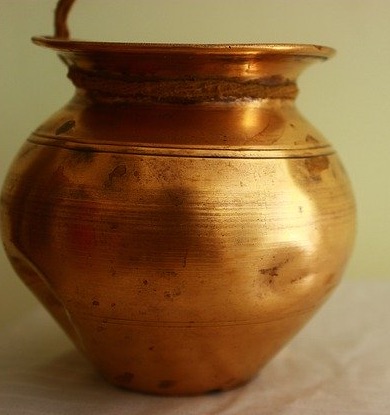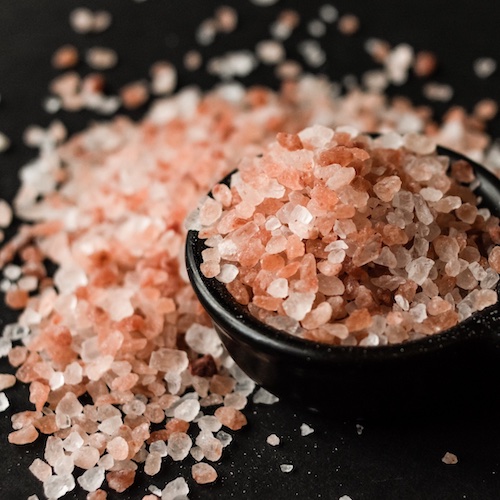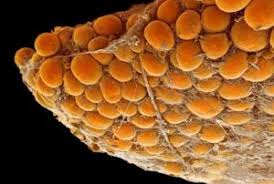Related article Ayurveda Tridosha Theory for Diagnosis of Diseases
What is Kapha Dosha?
Texts of Ayurveda explain Kapha dosha as one of three energetic factors or Tridosha. (tridoshas are Vata, pitta, and Kapha ) . Its Panchamahabhuta constitution is dominated by 2 major elements water and earth. Like its constituent elements, Kapha tends to be cool, moist, stable, and heavy.
Kapha governs all structure and lubrication in the mind and body. It controls weight, growth, lubrication for the joints and lungs, and formation of all the saptha dhatu or seven tissues — like rasa, rakta, mamsa, medha, asthi ,majja, and shukra ( nutritive fluids, blood, muscles, fat, bones, marrow, and reproductive tissues.)
Why should you balance Kapha?
Kapha dosha governs structure and fluid balance in the body. You have to balance Kapha if –
- You are often over-settled and lethargic.
- you experience sinus problems.
- you sleep long hours, yet wake up unrefreshed.
- your skin and hair oily
- you find that you are possessive and over-attached.
- you feel discomfort in cold, damp weather.
- you feel lazy and complacent.
- you experience bloating and water retention.
- you feel stiff and heavy, especially in the morning.
- you experience congestion.
Tips for Balancing Kapha
Follow these to balance kapha
- practice Vigorous regular exercise, a little each day.
- Stay in Warm temperatures.
- Eat Fresh fruits, vegetables, and legumes.
- Favor katu rasa (pungent), tikta rasa (bitter), kashaya rasa (astringent) tastes and light, dry and warm foods.
- Reduce heavy, oily, and cold foods and sweet, sour, and salty tastes.
- Seek out variety and new experiences.
- Stay warm in cold, damp weather.
- Follow the rule Early to bed, early to rise.
Kapha-Pacifying Diet
- Dairy. Low-fat milk is better. Always boil milk before you drink it — which makes it easier to digest — and take it warm. Do not take milk with a full meal or with sour or salty food. You might add one or two pinches or turmeric or ginger to whole milk before boiling it to help reduce any Kapha-increasing qualities in the milk.
- Fruit. Lighter fruits, such as apples and pears, are better. Reduce heavy or sour fruits, such as oranges, bananas, pineapples, figs, dates, avocados, coconuts, and melons, as these fruits increase Kapha.
- Sweeteners. Honey is excellent for reducing Kapha. Reduce sugar products, as these increase Kapha.
- All beans are fine, except tofu.
- Reduce all nuts.
- Grains. Most grains are fine, especially barley and millet. Do not take too much wheat or rice, as they increase Kapha.
- Spices. All are fine, except for salt. It increases Kapha.
- Vegetables. All are fine, except tomatoes, cucumbers, sweet potatoes, and zucchini. They all increase Kapha.
Types of Kapha
- Tarpaka Kapha: Moisture for nose, mouth, eyes, and brain. When this goes out of balance you experience Sinus congestion and a poor sense of smell.
- Bhodaka Kapha: Sense of taste, which is essential for good digestion. Imbalance can cause a Poor sense of taste, and food cravings due to a lack of fulfillment.
- Kledaka Kapha: Moisture of the stomach lining for good digestion. When goes out of balance may cause Impaired digestion and poor absorption.
- Avalambaka Kapha: Protects the heart, strong muscles, and healthy lungs. An imbalance of this type of kapha may cause Lethargy, respiratory problems, and lower back pain.
- Shleshaka Kapha: Lubrication of the joints, soft and supple skin. Vitiation may cause Weight gain, oily skin, loose or painful joints, and itchy skin as in psoriasis.
Kapha Season
Kapha season extends from frigid winter days, when the ground freezes solid, to mud-luscious early spring when the snow melts, the sap rises, and the first tentative shoots break through the ground. These conditions disturb Kapha dosha’s heavy, dense, wet, gooey, stable, and cool qualities. In Hemantha rutu and shishira rutu kapha tends to increase. To pacify Kapha during the early part of this season:
Switch up your diet.
Turn to foods that are lighter, drier, pungent, and warming. As soon as they’re available, eat the first bounty of the season—sprouts, berries, dandelion, and other spring greens—which naturally support this time of cleansing. And stick to three meals a day to avoid overindulging.
Get moving.
Do things that get you up and out of the house—early. Get up before kapha time (6 a.m. to 10 a.m.), and get in some exercise—bike riding, walking, or other light aerobic activity—before 10 a.m. This schedule will help you fend off seasonal weight gain.
Commit to a routine.
Follow dinacharya or ayurvedic daily routine and rutucharya or ayurvedic seasonal routine. Daily use of your tongue scraper, neti pot, and nasya oil will help with seasonal allergies and keep kapha from building.
Author – Dr.Savitha Suri. Consultant ayurvedic physician.
Click for Ayurvedic Consultation
Call us at +91 9945995660 / +91 9448433911
WhatsApp + 91 6360108663/







Pingback: Ayurveda Says Butter is Better- Importance of Butter in Ayurveda
Pingback: Uses of Ashoka Tree - Saraca Asoca or Saraca Indica
Pingback: Lodhra Symplocos Racemosa for Infertility, PCOS and Skin
Pingback: What Causes Erectile Dysfunction in Young Men ? An Ayurveda View
Pingback: Ayurveda Health Benefits of Ghee
Pingback: 6 Important Ayurvedic Treatments for Obesity or Weight Loss
Pingback: Lemon for Weight Loss, Detox, ED, PCOS, and Diabetes
Pingback: Ayurveda Vata Dosha - Body Type and Balancing Tips
Pingback: Ayurveda Pitta Dosha , Its Types, Pitta Diet, Pitta Balancing
Pingback: Ayurveda Description of 7 Tissues or Sapta Dhatu
Pingback: Rakta dhatu (Blood ) in Ayurveda
Pingback: Ayurveda definition of Mamsa Dhatu ( Muscle tissue )
Pingback: Health Benefits of Green Gram - Moong/dal/sprouts- Vigna radiata (mung) - Ayurveda Remedies, Tips and Treatment
Pingback: Health Benefits of Coriander/cilantro, seeds, leaves, Benefits - Ayurveda Remedies, Tips and Treatment
Pingback: Ayurvedic Remedies for Cystitis in Females
Pingback: Ayurveda Health benefits of Kiratatikta–Chirata-Swertia Chirata
Pingback: Brimhana Therapy an Ayurveda Way to Gain Weight
Pingback: Ayurveda Medicinal Uses and Health Benefits of Lotus Flower
Pingback: Ayurveda Health Benefits of Sugarcane Ikshu Saccharum officinarum
Pingback: How to Increase Immunity Through Ayurveda? - Ayurveda Remedies, Tips and Treatment
Pingback: Cystitis in Women - An Ayurveda View
Pingback: Bhringrajasav Benefits- Liver Detox, Hair and Skin
Pingback: Ayurveda Health Benefits of Garcinia Cambogia or Vrukshamla